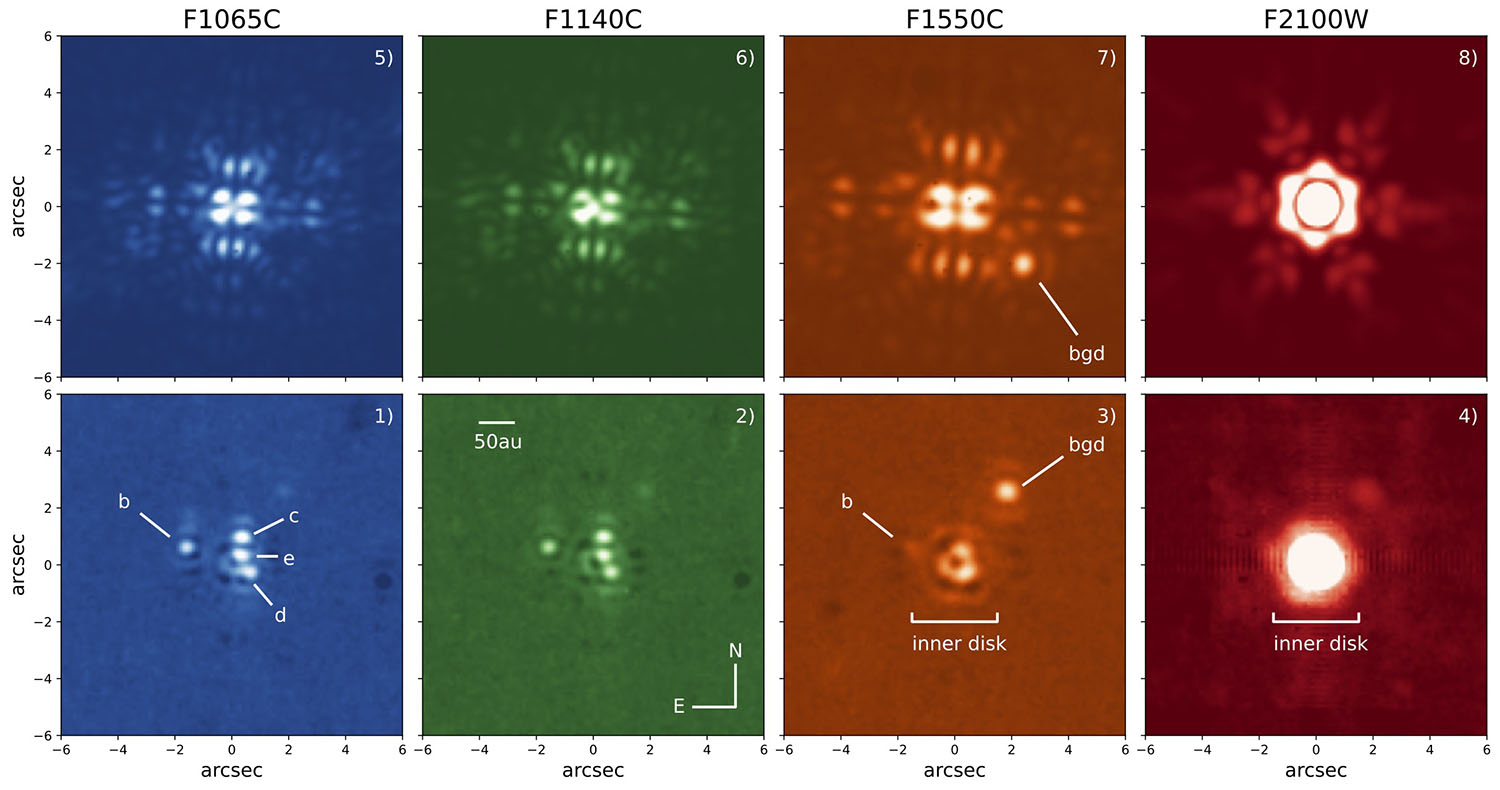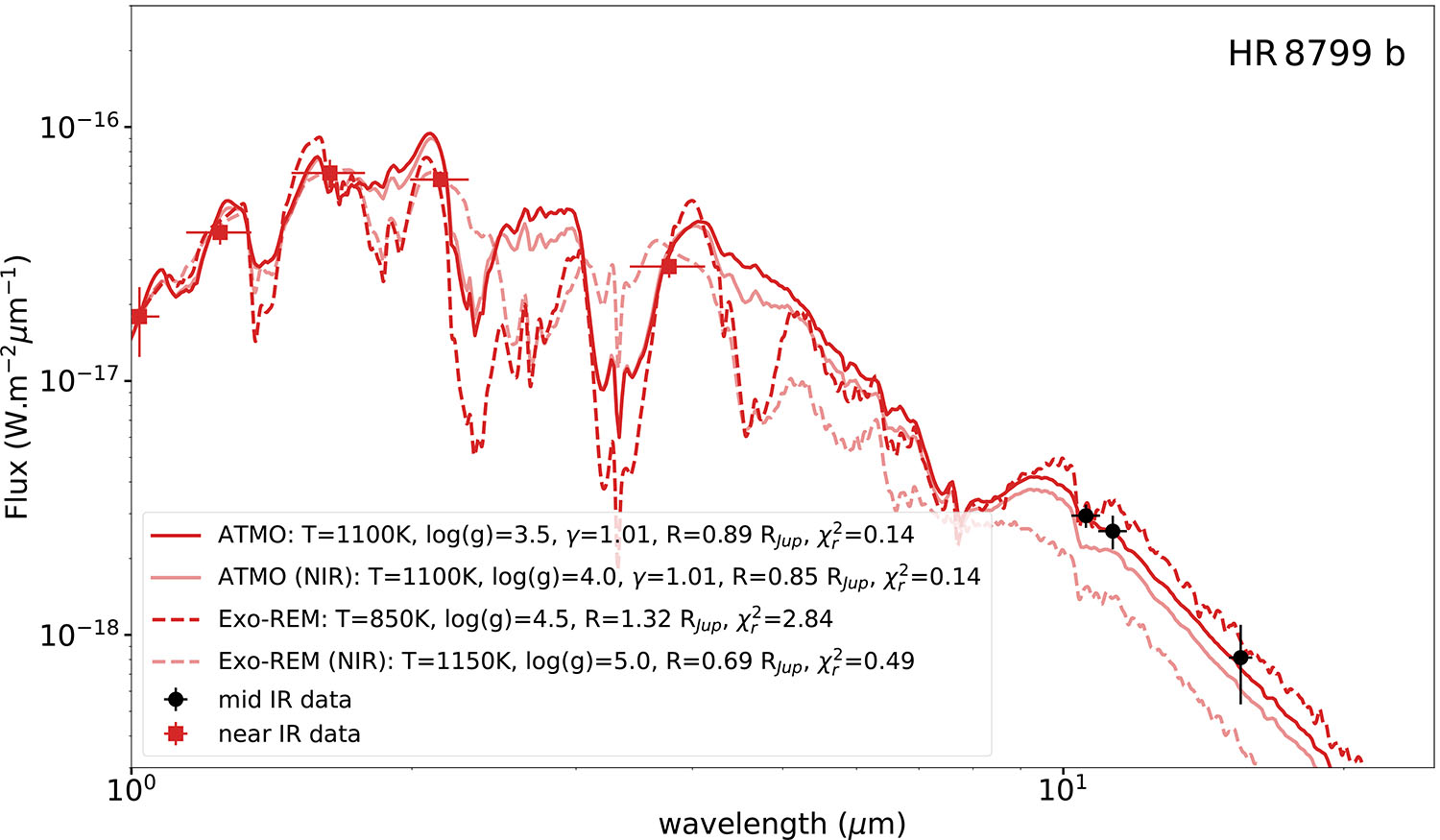Direct imaging of exoplanets with JWST/MIRI
- 1LESIA, Observatoire de Paris, Université PSL, CNRS, Sorbonne Université, Univ. Paris Diderot, Sorbonne Paris Cité, 5 place Jules Janssen, 92195 Meudon, France (anthony.boccaletti@obspm.fr)
- 2Space Telescope Science Institute, 3700 San Martin Dr, Baltimore, Maryland 21218, USA
- 3Université Paris-Saclay, Université Paris Cité, CEA, CNRS, AIM, 91191, Gif-sur-Yvette, France
JWST has opened a completely new spectral range in the mid IR for the study of exoplanetary systems which promise to offer unprecedented results both in terms of characterization but also discovery space.
Two observing modes in MIRI are of particular interest : 1) the coronagraphic mode installed in the imager made of four independent coronagraphic masks paired with dedicated filters covering the ~10 to ~20 microns window, and 2) the Medium Resolution Spectrograph which has a much wider spectral range from 5 to 28 microns but without coronagraphic capacity.
We will first describe these two modes and their respective performances, based on actual observations or from simulations. Then we will present the first results from the exoplanet Guaranteed Time Observations team of the MIRI consortium, focusing for instance on the multiplanet system HR8799 (see figure 1 and 2), and highlight some results obtained from General Observers programs. Finally we will discuss the broad interest of MIRI for science cases like cold planets at large orbital separations as well as protoplanets.

Figure 1 : Raw coronagraphic and reference star subtracted images of the multiple planet systems HR8799 obtained with MIRI in 4 different filters at mid IR wavelenghts.

Figure 2: spectral energy distribution of planet HR8799 b compared to 2 atmospheric models fitted on near IR and mid IR photometric data points.
How to cite: Boccaletti, A., Mâlin, M., Rouan, D., Perrot, C., Lagage, P.-O., Lagrange, A.-M., Charnay, B., and Pierre, B.: Direct imaging of exoplanets with JWST/MIRI, Europlanet Science Congress 2024, Berlin, Germany, 8–13 Sep 2024, EPSC2024-1187, https://doi.org/10.5194/epsc2024-1187, 2024.